Giant Otter
- March 21, 2024
- 0 comment
The Giant otter, scientifically known as Pteronura brasiliensis, is a remarkable aquatic mammal found predominantly in the freshwater habitats of South America. Renowned for its impressive size and captivating social behaviors, the giant otter stands as the largest member of the otter family, Mustelidae. With its streamlined body, webbed feet, and dense waterproof fur, the giant otter is superbly adapted for life in the water. Typically measuring up to 6 feet (1.8 meters) in length and weighing between 55 to 70 pounds (25 to 32 kilograms), these charismatic creatures play a crucial role in maintaining the ecological balance of their riverine ecosystems.
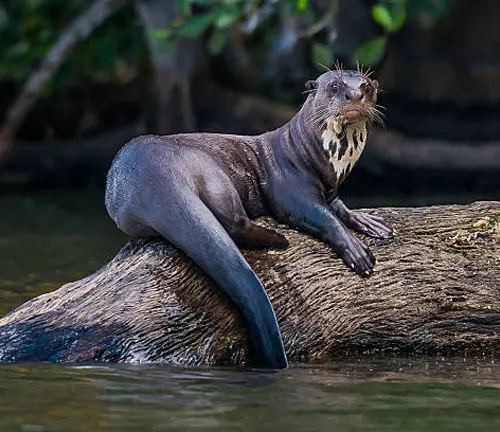
From their intricate family structures to their agile hunting techniques, giant otters exhibit a complex array of behaviors that continue to fascinate scientists and nature enthusiasts alike. However, despite their adaptability and resilience, giant otters face numerous threats to their survival, including habitat loss, pollution, and conflicts with humans. As a result, concerted conservation efforts are underway to protect these iconic inhabitants of South America’s waterways and ensure their long-term survival for generations to come.
| Specifications | Details |
|---|---|
| Scientific Name | Pteronura brasiliensis |
| Common Name | Giant Otter |
| Family | Mustelidae |
| Length | Up to 6 feet (1.8 meters) |
| Weight | 55 to 70 pounds (25 to 32 kilograms) |
| Habitat | Freshwater habitats including rivers, lakes, and swamps within South America |
| Distribution | Predominantly found in the Amazon, Orinoco, and La Plata river basins |
| Fur | Dense and waterproof, dark brown in color with lighter markings on throat and chest |
| Diet | Primarily fish, supplemented by crustaceans, amphibians, and small mammals |
| Behavior | Highly social, living in extended family groups, exhibiting cooperative hunting and grooming behaviors |
| Conservation Status | Endangered |
Giant Otter : The Aquatic Marvel of South America
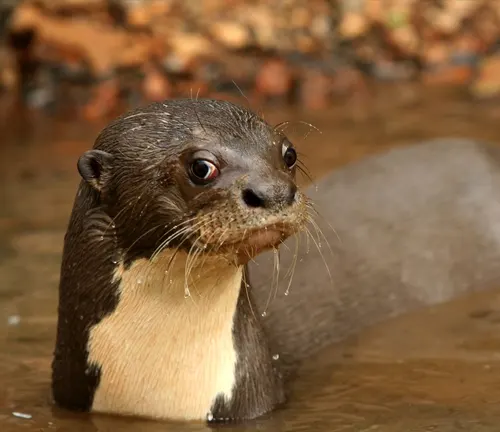
Giant otters, scientifically known as Pteronura brasiliensis, are one of the most captivating and elusive creatures inhabiting the freshwater ecosystems of South America. With their distinctive appearance and remarkable social behaviors, these creatures have intrigued both scientists and nature enthusiasts alike. In this article, we delve into the fascinating world of giant otters, exploring their physical characteristics, habitat, behavior, conservation status, and more.
Physical Characteristics
Size and Weight
Giant otters are known for their impressive size within the otter family. On average, they can reach lengths of up to 6 feet (1.8 meters) and weigh between 55 to 70 pounds (25 to 32 kilograms). These measurements make them the largest otter species in the world. Their elongated bodies, streamlined for efficient swimming, contribute to their remarkable agility and speed in the water.

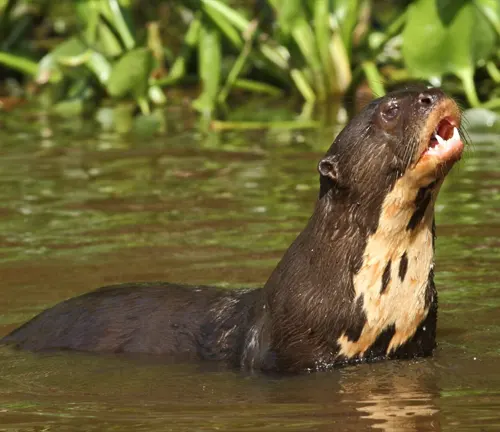
Fur and Coloration
The fur of giant otters is a defining feature, serving multiple purposes in their aquatic lifestyle. Their fur is exceptionally dense and waterproof, providing insulation against the cold waters they inhabit. Typically, giant otters display a dark brown fur color, with lighter markings on their throats and chests. These lighter patches often vary in shape and size, adding to the individuality of each otter.
The distinct coloration of giant otters serves a practical function in their natural environment. The dark brown fur helps camouflage them against the murky waters, aiding in stealthy hunting and avoiding potential predators. Additionally, their lighter markings may play a role in communication within their social groups, although further research is needed to fully understand this aspect of their behavior.
Habitat and Distribution
Giant otters are predominantly found in the freshwater habitats of South America, where they inhabit a range of aquatic environments including rivers, lakes, and swamps. They are particularly associated with pristine, undisturbed habitats with abundant fish populations.
Distribution
Giant otters have a broad distribution across the continent, primarily concentrated in the Amazon, Orinoco, and La Plata river basins. Within these regions, they occupy various river systems and waterways, utilizing both main channels and smaller tributaries.
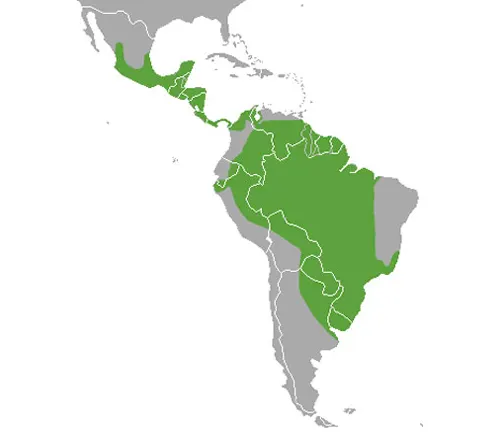
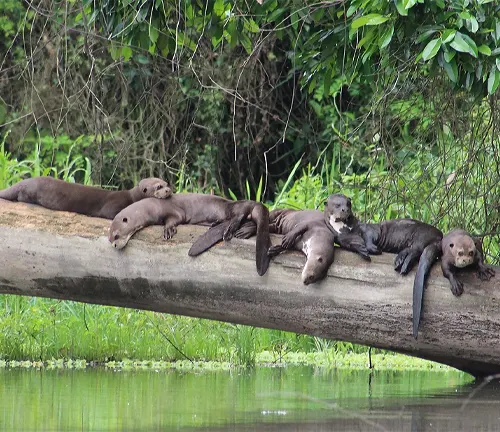
Habitat
These charismatic creatures prefer habitats characterized by clean, clear waters and dense vegetation along the riverbanks. They construct extensive burrow systems in the riverbanks for shelter and breeding, often utilizing roots and vegetation to reinforce their dens.
Giant otters are most commonly found in areas with minimal human disturbance and ample prey availability. However, they can also adapt to certain anthropogenic environments, provided there are suitable resources and adequate protection from human activities.
Diet and Feeding Habits
Giant otters are apex predators within their freshwater ecosystems, primarily feeding on a diet of fish supplemented by other aquatic prey. Their feeding habits are characterized by efficiency, coordination, and adaptability to various environmental conditions.
Diet
The primary component of the giant otter’s diet is fish, which makes up the majority of their prey. They target a diverse range of fish species, including piranhas, catfish, and characins, depending on availability and habitat. Additionally, giant otters may also consume crustaceans, amphibians, and small mammals when fish populations are scarce.
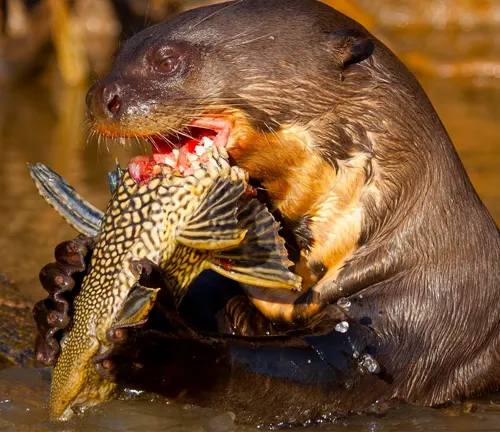
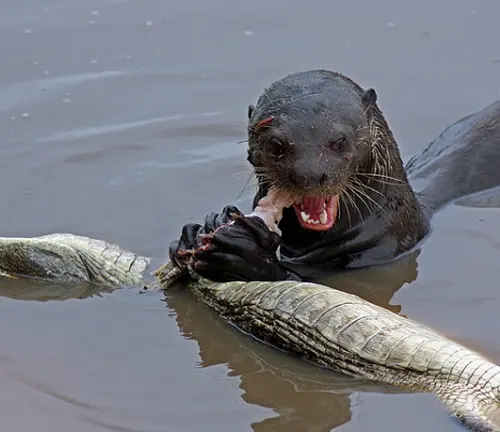
Feeding Habits
Giant otters employ a variety of hunting techniques to capture their prey, often working together in coordinated groups to maximize success. One of their most common strategies involves herding fish into shallower waters, where they can more easily corral and capture their prey.
Once prey is located, giant otters use their keen senses, including sharp eyesight and acute hearing, to detect movements in the water. They then employ swift and precise maneuvers to capture fish, using their powerful jaws and sharp teeth to secure their prey.
Giant otters are highly skilled and efficient hunters, capable of consuming a significant portion of their body weight in fish each day. Their cooperative hunting behavior and adaptability to different prey species contribute to their success as apex predators within their ecosystems.
Social Structure and Behavior
Giant otters are highly social animals, exhibiting complex behaviors and forming cohesive family groups known as “holts.” These family units play a crucial role in the social structure and survival of giant otters in their freshwater habitats.
Family Groups
The foundation of giant otter society is the family unit, typically composed of a monogamous breeding pair and their offspring from multiple breeding seasons. These extended family groups may consist of up to 20 individuals, although group sizes can vary depending on environmental factors and resource availability.


Cooperative Activities
Within the family group, giant otters engage in various cooperative activities that strengthen social bonds and contribute to their collective survival. These activities include hunting, grooming, and territorial defense, all of which require coordinated efforts and communication among group members.
Communication
Communication among giant otters is facilitated through a combination of vocalizations, body language, and scent marking. Vocalizations such as whistles, chirps, and growls are used to convey information and maintain contact within the group, while body language signals dominance, submission, and other social interactions.
Territoriality
Giant otters are territorial animals, with family groups defending exclusive territories along riverbanks and within their home ranges. These territories are marked with scent markings, including urine and feces, which serve to deter intruders and assert dominance within their habitat.
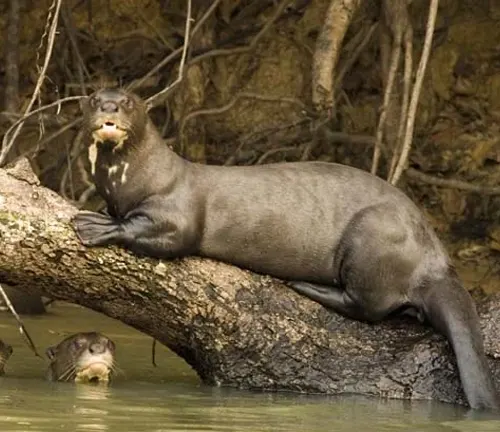
Reproduction and Life Cycle
Reproduction plays a crucial role in the life cycle of giant otters, with individuals following a distinct pattern of breeding, gestation, and parental care that ensures the survival of their offspring in their freshwater habitats.
Breeding Season
Breeding among giant otters typically occurs during the dry season, which varies depending on the region and local environmental conditions. Breeding pairs form monogamous bonds, remaining together throughout the breeding season and raising multiple litters of offspring over their lifetime.
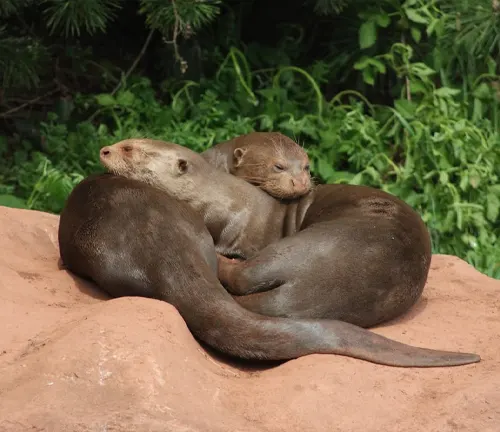

Gestation and Birth
After mating, female giant otters undergo a gestation period lasting approximately 65 to 70 days. During this time, they prepare a suitable den within their burrow system along the riverbanks, where they give birth to litters of one to six pups. Newborn pups are born blind and helpless, relying entirely on their parents for care and nourishment.
Parental Care
Both parents play active roles in caring for their offspring, with the entire family group participating in activities such as grooming, feeding, and protecting the young. Giant otters are highly attentive parents, providing constant supervision and guidance to ensure the survival of their offspring in their aquatic environment.
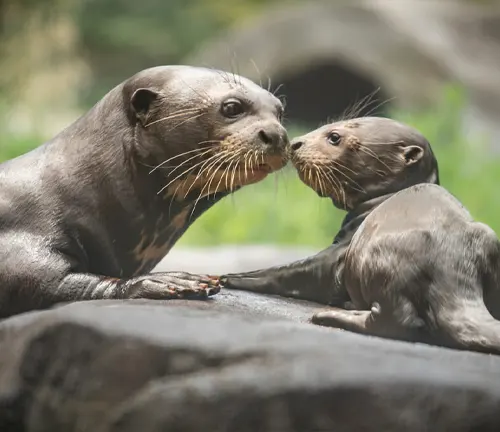
Development and Growth
As the pups grow, they gradually become more independent, learning essential survival skills such as swimming, diving, and hunting from their parents and older siblings. Juvenile otters remain with the family group for several years, gradually transitioning to adulthood as they reach sexual maturity and prepare to establish their own territories.
Dispersal
Upon reaching sexual maturity, juvenile giant otters undergo dispersal, leaving the family group to establish territories of their own along riverbanks and within their home ranges. This process helps prevent inbreeding and promotes genetic diversity within the population, contributing to the long-term viability of giant otters in their freshwater habitats.
Conservation Status
Giant otters are classified as endangered by the International Union for Conservation of Nature (IUCN), indicating that they face a high risk of extinction in the wild. Several factors contribute to the endangered status of giant otters, including habitat loss, pollution, and conflicts with humans.
Habitat Loss
One of the most significant threats to giant otters is habitat loss and degradation due to deforestation, agricultural expansion, and infrastructure development. The destruction of riparian habitats along rivers and wetlands reduces the availability of suitable nesting sites and foraging grounds for giant otters, leading to declines in their populations.

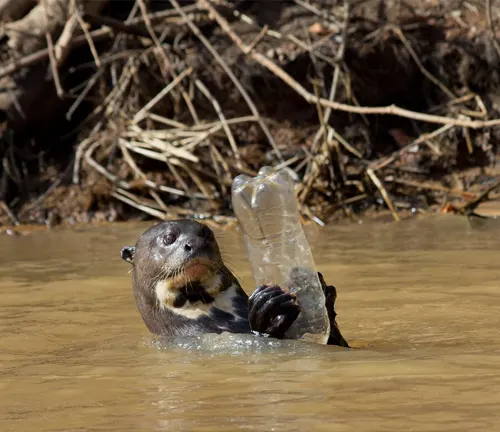
Pollution
Pollution of freshwater ecosystems poses a significant threat to the health and survival of giant otters. Chemical pollutants from agricultural runoff, mining activities, and industrial discharge can contaminate waterways, impacting fish populations and exposing giant otters to toxins that can accumulate in their bodies over time.
Illegal Hunting and Fishing
Giant otters are often targeted by illegal hunters for their fur, which is highly valued in the illegal wildlife trade. Additionally, conflicts with fishermen over competition for fish resources can result in retaliatory killings and incidental trapping of giant otters in fishing gear, further exacerbating their vulnerability to population declines.
Human Encroachment
Increased human encroachment along riverine areas disrupts the natural behaviors and habitat requirements of giant otters. Activities such as dam construction, logging, and urbanization fragment their habitats, limiting their access to essential resources and increasing their susceptibility to human-induced disturbances.
Conservation Efforts
Efforts to conserve giant otters involve a combination of habitat protection, community engagement, research initiatives, and educational programs aimed at raising awareness about the importance of these charismatic species. Protected areas and conservation reserves play a crucial role in safeguarding their habitats, while collaborative partnerships between scientists, local communities, and government agencies promote sustainable management practices and mitigate human-wildlife conflicts.
Research and Monitoring
Ongoing research and monitoring efforts play a crucial role in understanding the ecology, behavior, and population dynamics of giant otters, providing valuable insights for conservation and management strategies.
Ecological Studies
Researchers conduct ecological studies to assess the habitat preferences, foraging behavior, and population dynamics of giant otters in their freshwater ecosystems. These studies involve field observations, habitat surveys, and population assessments to gather data on their distribution, abundance, and habitat requirements.
Behavioral Observations
Behavioral studies help scientists understand the social structure, communication, and reproductive behavior of giant otters within their family groups. Observations of group interactions, vocalizations, and parental care provide insights into the intricate social dynamics and cooperative behaviors exhibited by these charismatic creatures.
Population Surveys
Population surveys are conducted to estimate the size, distribution, and trends of giant otter populations across their range. Techniques such as camera trapping, genetic analysis, and acoustic monitoring are used to gather data on population densities, demographic composition, and habitat use patterns.
Threat Assessment
Researchers assess the various threats facing giant otters, including habitat loss, pollution, illegal hunting, and human-wildlife conflicts. By identifying key threats and their underlying causes, conservation efforts can be targeted towards mitigating these impacts and promoting the long-term survival of giant otters in their natural habitats.
Conservation Initiatives
Research findings are instrumental in informing conservation initiatives and management strategies aimed at protecting giant otters and their ecosystems. Collaborative partnerships between scientists, local communities, and government agencies facilitate the implementation of effective conservation measures, such as habitat restoration, protected area management, and sustainable resource use practices.
Public Awareness
Research findings are also disseminated to the public through educational programs, outreach events, and media campaigns to raise awareness about the importance of giant otters and their conservation needs. By engaging and empowering local communities, stakeholders, and decision-makers, research contributes to building support for conservation efforts and fostering a culture of stewardship towards South America’s waterways.
Different Species
The Giant otter, Pteronura brasiliensis, is the only recognized species within the genus Pteronura and is commonly referred to as the giant otter. There are no different species of giant otters.
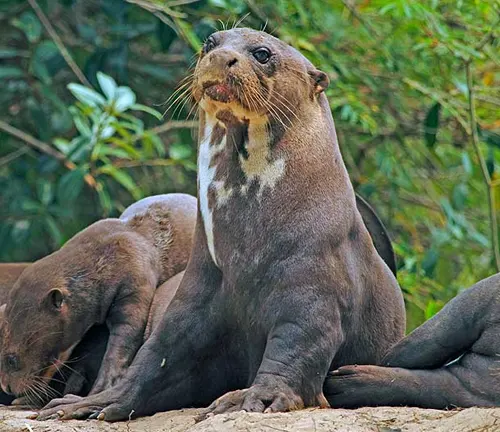
Frequently Asked Question (FAQs)
- Are giant otters dangerous to humans?
Giant otters are typically not aggressive towards humans unless provoked or threatened. However, interactions should be approached with caution to avoid disturbances to their natural behavior. - What is being done to protect giant otters?
Conservation efforts include habitat protection, community engagement, research initiatives, and educational programs aimed at raising awareness about the importance of giant otters and their ecosystems. - How do giant otters communicate with each other?
Giant otters communicate through a variety of vocalizations, including whistles, chirps, and growls, as well as body language and scent marking. - What is the biggest threat to giant otters?
Habitat loss, pollution, illegal hunting, and conflicts with humans are among the biggest threats to giant otter populations, leading to declines in their numbers. - Can giant otters be kept as pets?
No, giant otters are wild animals and should not be kept as pets. Additionally, their specialized care requirements and social structure make them unsuitable for captivity. - How many giant otters are left in the wild?
Exact population numbers are difficult to determine, but giant otters are considered endangered, with populations facing significant threats and declines. - What do giant otters eat?
Giant otters primarily feed on fish, but they also consume crustaceans, amphibians, and small mammals. Their diet varies depending on availability and location. - How long do giant otters live in the wild?
In the wild, giant otters have an average lifespan of around 8 to 10 years. However, they may live longer in captivity under optimal conditions. - Do giant otters build dams?
Giant otters do not build dams like beavers. Instead, they construct burrows along riverbanks for shelter and breeding purposes. - Are giant otters endangered?
Yes, giant otters are classified as endangered by the International Union for Conservation of Nature (IUCN) due to habitat loss, pollution, and other threats. - Do giant otters have any natural predators?
While adult giant otters do not have many natural predators, they may occasionally fall prey to large predators such as jaguars, anacondas, and caimans, especially vulnerable juveniles. - How do giant otters hunt for food?
Giant otters use a combination of cooperative hunting techniques, including herding fish into shallower waters and working together to catch prey. They are highly skilled and efficient hunters.



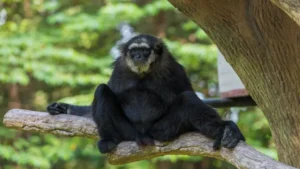


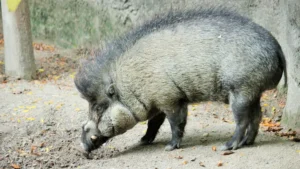
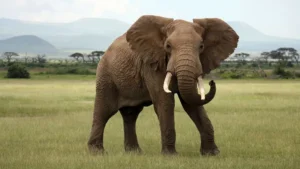
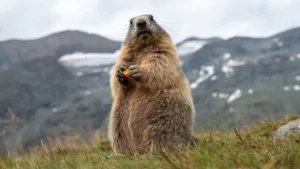

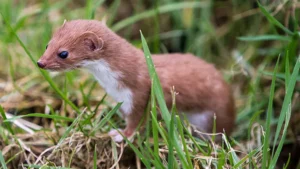
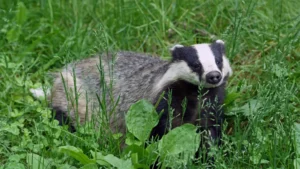
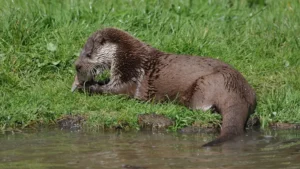
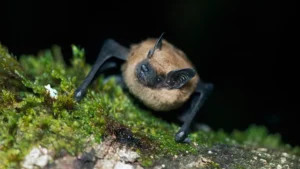
Leave your comment